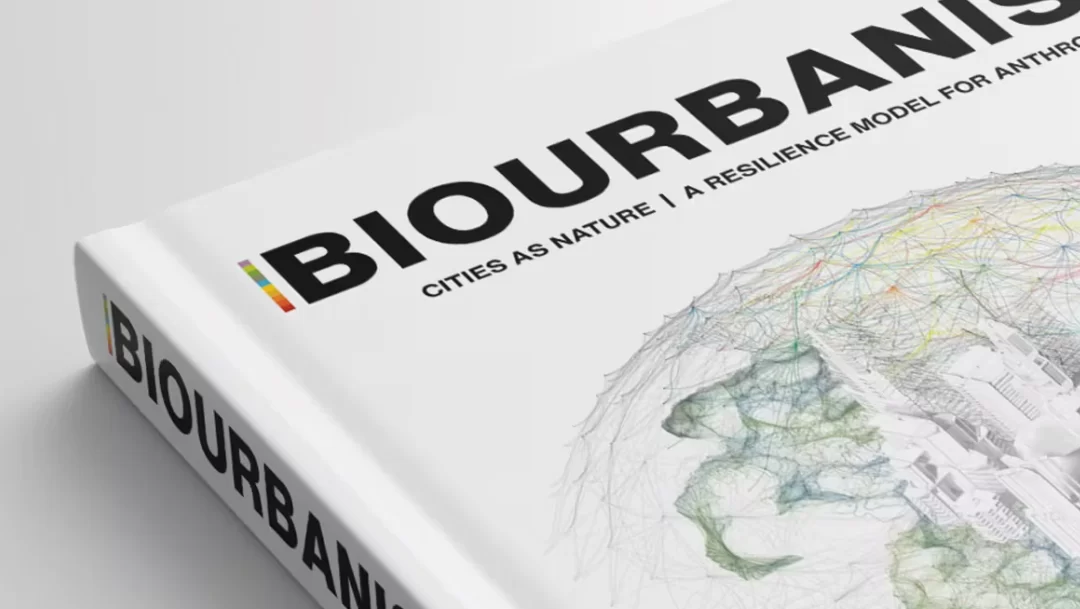Cities and nature have long been considered separate entities when it comes to the environment and the climate crisis. However, according to Adrian McGregor, founder and chief design officer at urban design and landscape architecture firm McGregor Coxall, it is imperative to change this perception.
With cities accounting for over 75 percent of global greenhouse gas emissions, designing smart and sustainable cities is paramount to addressing climate change. McGregor proposes reclassifying cities as a form of “novel nature” and advocates for the adoption of the biourbanism concept to decarbonize cities and enhance their resilience.
Reimagining Cities as “Novel Nature”
McGregor suggests a change in thinking, instead perceiving cities as integral components of nature, even if their appearance may not resemble natural environments. He proposes reclassifying cities as “biocities” to emphasize their interconnectedness with the natural world.
By embracing this perspective, urban planning, development, and policymaking can take a more holistic approach, integrating ecological principles, biodiversity, and natural processes into the fabric of cities. This shift enables the creation of sustainable urban environments that coexist harmoniously with surrounding ecosystems.
The Biourbanism Model: A Pathway to Decarbonization
In his book, Biourbanism: Cities as Nature, McGregor presents the biourbanism model as a comprehensive framework for decarbonizing cities and enhancing their resilience. This model highlights the interconnections among 10 key urban systems:
- Citizens
- Economy
- Energy
- Infrastructure
- Mobility
- Technology
- Water
- Waste
- Landscape
- Food
By considering the interactions between these systems, cities can promote overall health and prosperity while reducing carbon emissions.
Biourbanism advocates for integrating into urban design sustainable practices and technologies such as renewable energy generation, efficient transportation systems, green infrastructure, and circular economy principles. With these strategies, cities can not only reduce their carbon footprint but enhance their adaptability to the changing climate.
Digital Twin Technology for Resilience Planning
A critical element of the biourbanism model is the utilization of digital twin technology. McGregor proposes creating digital replicas of physical cities linked to real-time data. These digital twins leverage satellite data, remote sensing, and artificial intelligence to provide valuable insights for climate impact testing, infrastructure planning, and investment prioritization, enabling users, including citizens and government officials, to simulate changes within the city and assess their impact.
Digital twins allow city planners to forecast the long-term consequences of decisions such as new infrastructure projects or policy changes on energy consumption, water management, and overall carbon emissions. This technology facilitates evidence-based decision-making, ensuring that cities are designed and operated in a manner that minimizes their environmental impact and maximizes their resilience to climate-related challenges.
City-Specific Resilience Action Plans
Recognizing that each city faces unique climate challenges based on its geographical location and vulnerability to extreme weather events, McGregor emphasizes the importance of developing city-specific resilience action plans. These plans should incorporate key performance indicators (KPIs) and targets tailored to address local climate impacts.
For instance, coastal cities may focus on strategies to mitigate sea-level rise, storm surge, and flood risks, while cities in arid regions may prioritize water conservation and heat resilience. Aligning resilience strategies with city-specific needs can allow governments, urban planners, and communities to effectively mitigate climate risks and promote sustainable development.
Empowering Citizens and Businesses
Engaging citizens and businesses is vital in the transition toward sustainable cities. Public awareness campaigns, educational programs, and community initiatives can encourage individuals to adopt environmentally responsible behaviors and participate in urban sustainability projects. Involving citizens in activities such as urban gardening, waste reduction, and clean energy adoption fosters a sense of ownership and empowers communities to contribute actively to climate action.
Businesses also play a significant role in driving sustainable practices and innovations. By disclosing climate risks, adopting sustainable business models, and integrating environmental considerations into their operations, businesses can contribute to reducing carbon emissions and promoting a greener economy. Governments and stakeholders should provide incentives, regulations, and support mechanisms to facilitate the transition toward sustainable business practices.
Biourbanism Projects Worldwide
Biourbanism principles have gained traction worldwide, with numerous projects embracing this approach to create more sustainable and resilient cities. For example, the city of Freiburg, Germany, has implemented extensive renewable energy systems, pedestrian-oriented urban planning, and green spaces, positioning itself as a model for sustainable urban development. Masdar City in the United Arab Emirates highlights advanced technologies and innovative designs to achieve carbon neutrality and zero waste.
Meanwhile, Singapore’s “City in a Garden” vision incorporates nature-based solutions and green infrastructure, enhancing the city-state’s resilience to climate change. In Copenhagen, Denmark, the city’s commitment to cycling infrastructure, renewable energy, and sustainable urban planning has earned it a reputation as one of the world’s most eco-friendly cities.
These examples demonstrate the practical application of biourbanism principles and highlight the potential for cities worldwide to embrace sustainable practices, reduce their carbon emissions, and build resilience in the face of climate change.

